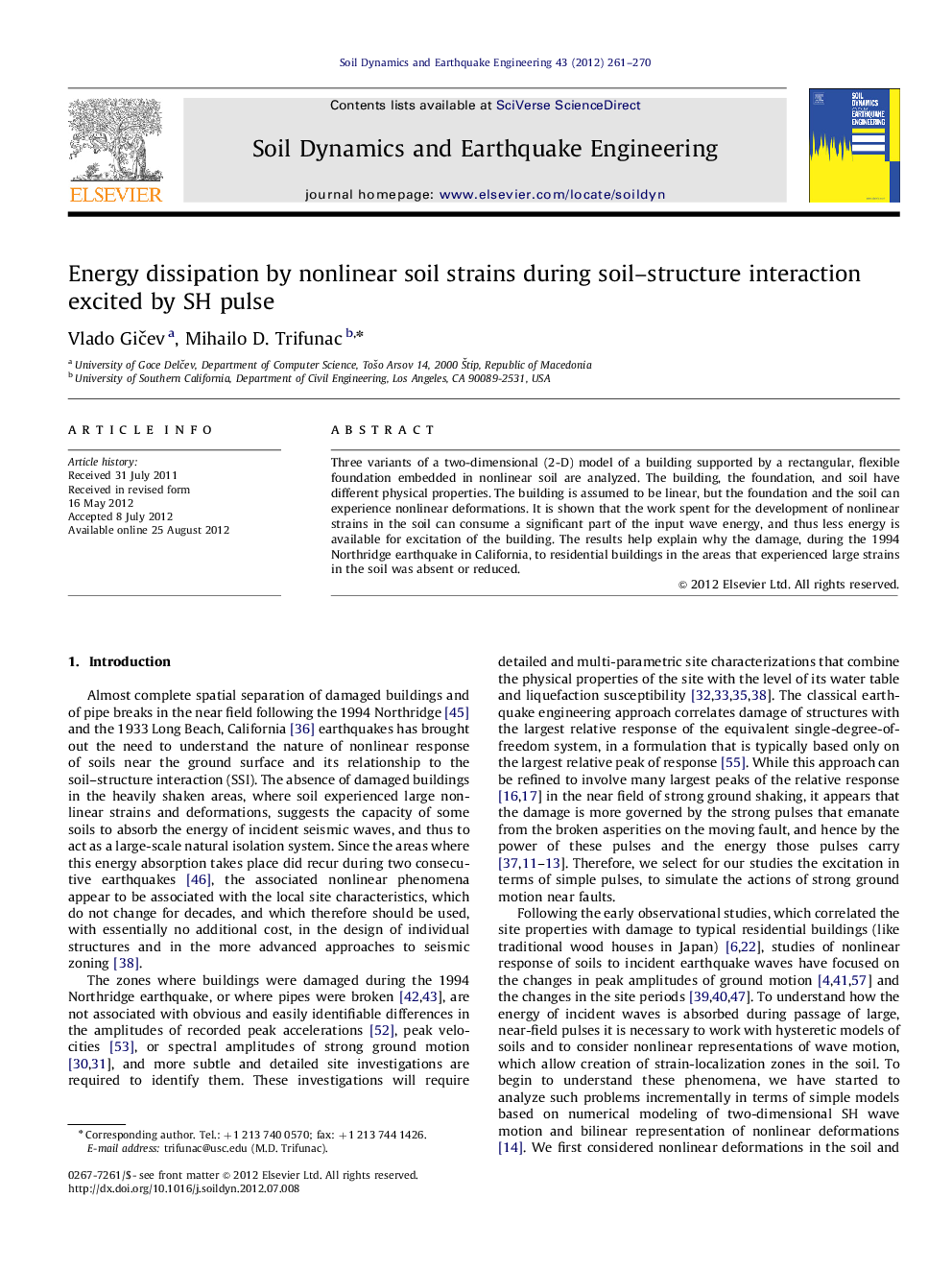| Article ID | Journal | Published Year | Pages | File Type |
|---|---|---|---|---|
| 304431 | Soil Dynamics and Earthquake Engineering | 2012 | 10 Pages |
Three variants of a two-dimensional (2-D) model of a building supported by a rectangular, flexible foundation embedded in nonlinear soil are analyzed. The building, the foundation, and soil have different physical properties. The building is assumed to be linear, but the foundation and the soil can experience nonlinear deformations. It is shown that the work spent for the development of nonlinear strains in the soil can consume a significant part of the input wave energy, and thus less energy is available for excitation of the building. The results help explain why the damage, during the 1994 Northridge earthquake in California, to residential buildings in the areas that experienced large strains in the soil was absent or reduced.
► Nonlinear soil–structure interaction. ► Nonlinear waves in the soil and in the foundation. ► Energy dissipation by yielding soil.
